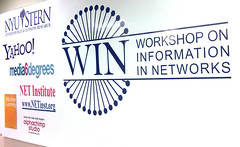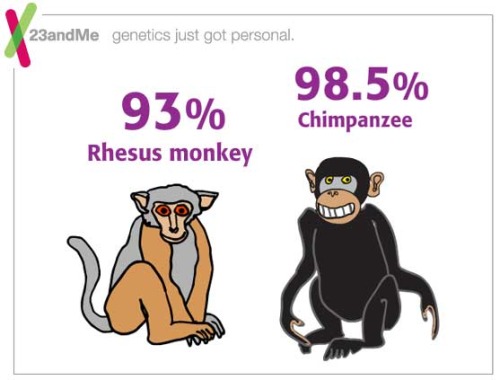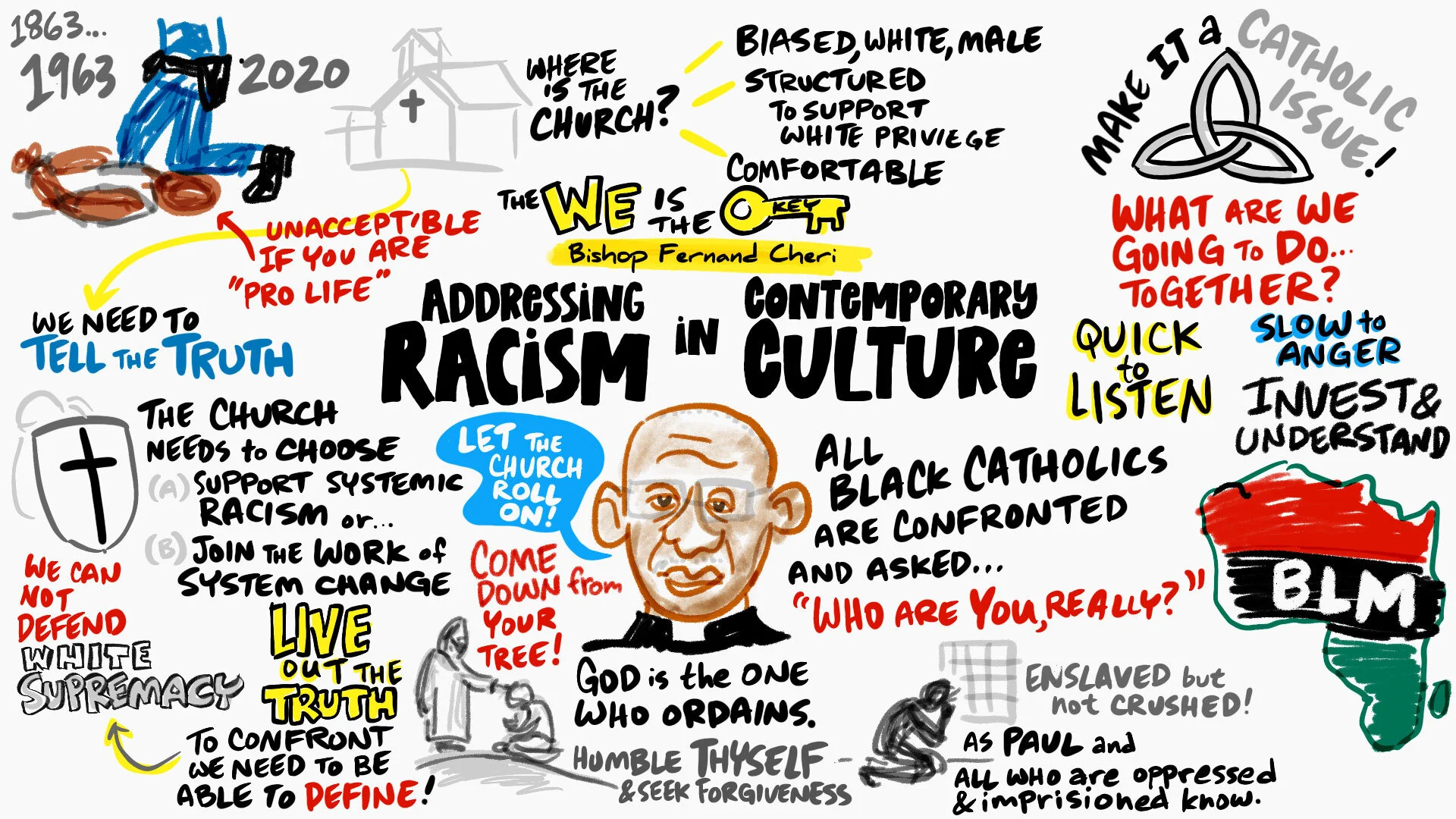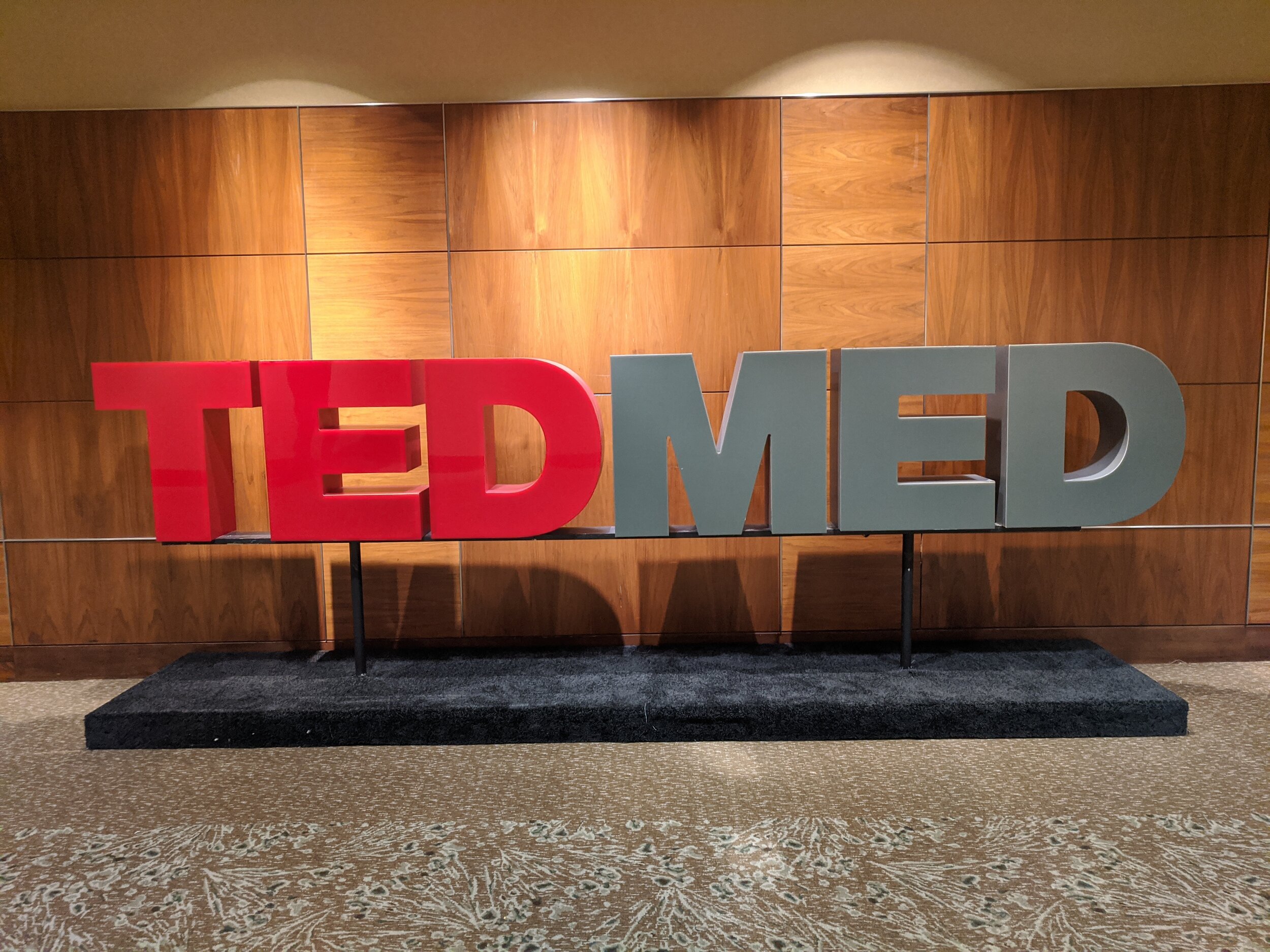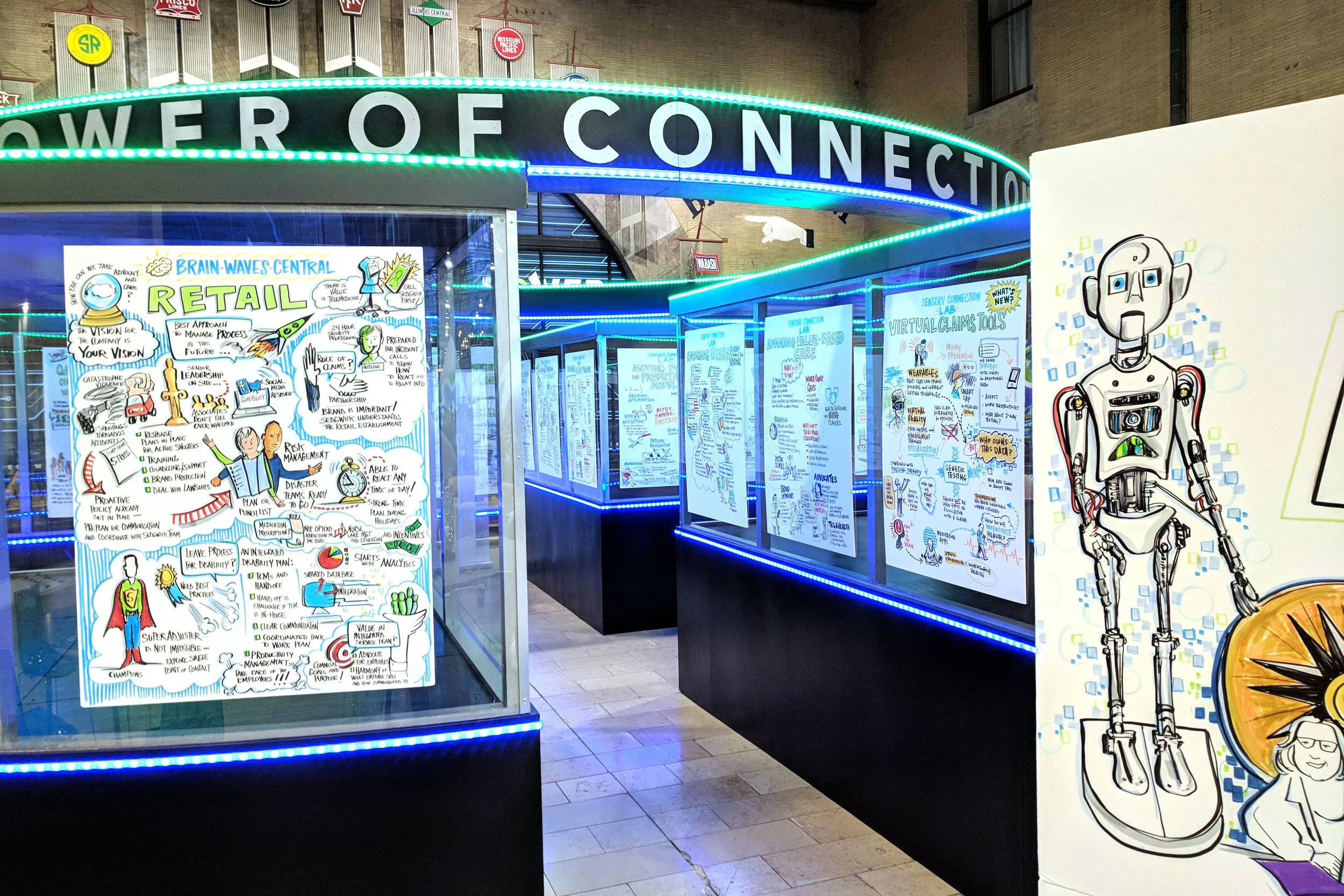NPR : RADIOLAB : ANIMAL MINDS
/
WNYC - Radiolab: Animal Minds (April 02, 2010):
ANIMAL MINDS When we gaze into the eyes of our beloved pets, can we ever really know what they might be thinking? Is it naive to assume they're experiencing something close to human emotions? Or, on the contrary, is it ridiculous to assume that they AREN'T feeling something like that? In this hour of Radiolab, we explore what science can say about what goes on in the minds of animals.
23 & Me & Mr. Chimp
/Like my daughters, like my mom--even like you!--I share a vast amount of DNA with the chimps, apes, and bananas. The consumer genetics testing company 23 & Me has a great Flash animation introduction to genetics.
Chimps & Humans & DNA - What makes us human?
/
From the May 2009 Scientific American Magazine: Comparisons of the genomes of humans and chimpanzees are revealing those rare stretches of DNA that are ours alone
The 1 percent difference: Humans are distinct from chimpanzees in a number of important respects, despite sharing nearly 99 percent of their DNA. New analyses are revealing which parts of the genome set our species apart. continue reading
Also check out:
Preparing for Pandemics: Resources from PopTech & Sterling Insights
/From Pop!Tech:
 October 25, 2008: Laurie Garrett shares her proposal for a change in global health policy, and accompanying shifts in foreign policy and perception by countries like the US. photography by kris krüg Renowned global health expert Laurie Garrett gave a powerful and frightening talk at PopTech 2008 on how countries deal - both effectively and ineffectively - with pandemics. Examining China's response to SARS, she asked: what if this happened here? How would we respond? Her presentation is essential viewing right now:
October 25, 2008: Laurie Garrett shares her proposal for a change in global health policy, and accompanying shifts in foreign policy and perception by countries like the US. photography by kris krüg Renowned global health expert Laurie Garrett gave a powerful and frightening talk at PopTech 2008 on how countries deal - both effectively and ineffectively - with pandemics. Examining China's response to SARS, she asked: what if this happened here? How would we respond? Her presentation is essential viewing right now:
http://www.poptech.org/popcasts/popcasts.aspx?lang=&viewcastid=227
Yesterday, just in time for the World Health Organization to raise the threat level from a 3 to a 4 (on a 6-point scale), Laurie gave a wide-ranging press teleconference on Swine Flu. We've summarized some of her high-level questions and answers on our blog:
http://www.poptech.org/blog/index.php/archives/3356

Finally, 2008 PopTech Fellow Erik Hersman (http://twitter.com/whiteafrican) wrote a terrific piece on information patterns that emerge during an emergency on social networking platforms (like Twitter), and how these can be aggregated and turned into real-time maps that shape a strategy for intervention:
http://blog.ushahidi.com/index.php/2009/04/27/information-patterns-and-thoughts-on-swine-flu/
The above represent just the kind of clear thinking we may yet need in this circumstance. Have a look, and if you feel moved to do so, please help us share these insights by forwarding, blogging, and tweeting the above to friends and colleagues.
From Joe & Rita Sterling of Sterling Insights:
 It’s been three years since our last pandemic readiness workbook update: Preparing for Pandemic – Family and Neighborhood Readiness Workbook. The Avian Flu has continued to smolder in Asia, Africa and parts of the Middle East only a few new human cases emerged. However, other strains of influenza have continued to mutate, including the new Swine Flu which is in the news today.
It’s been three years since our last pandemic readiness workbook update: Preparing for Pandemic – Family and Neighborhood Readiness Workbook. The Avian Flu has continued to smolder in Asia, Africa and parts of the Middle East only a few new human cases emerged. However, other strains of influenza have continued to mutate, including the new Swine Flu which is in the news today.
You can download a complimentary copy of our updated readiness workbook from our website: http://www.sterlinginsights.com/articles/pandemic_flu_20090501_dnld.pdf
Or you can order a paperback version: http://www.lulu.com/content/263485
From Joe Sterling:
http://www.wpxi.com/video/19313969/index.html
Here’s a great flu explanation on video by Henry Niman, Ph.D. founder of Recombinomics, a research firm focused on genetic evolution of infectious diseases. http://www.recombinomics.com/whats_new.html
I’ve been tracking Niman since 2005 and he is always a bit ahead of everyone else and tells it like it is.
Joe
12 Brain-Mind Principles - Geoffrey & Renata Caine
/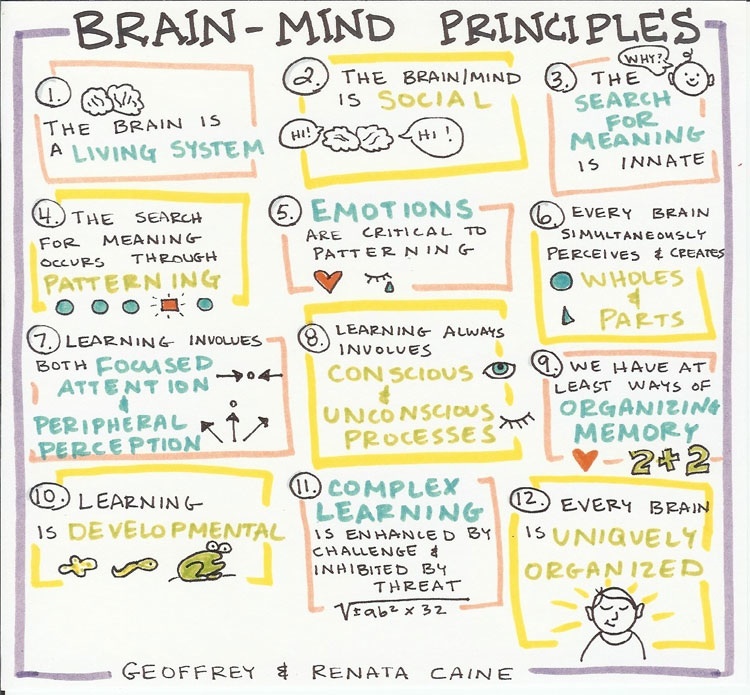
From Diane Durand:
How do we learn? How do we make connections? T
hese are questions I have wondered for many years. I spent the early part of my career trying to understand and enhance how adults learn as individuals and groups. Now I am raising two children ages one and five. The five-year-old has made incredible connections in her brain between colors, science, play, and reading.
Now as I work with a new little one, I am trying to remember: "What did I do with her older sister to help her learn?"
Life and learning is incredible.
I came across the model above, which I drew several years ago from some material Peter had brought back from a conference. At this particular conference he had the pleasure to meet Geoffrey and Renata Caine authors of 12 Mind/Brain Principles.
I loved the principles right away. I then created the image above to help me. (I learn best with a pen in hand.)
Primates on Facebook
/
Even online, the neocortex is the limit That Facebook, Twitter and other online social networks will increase the size of human social groups is an obvious hypothesis, given that they reduce a lot of the friction and cost involved in keeping in touch with other people. Once you join and gather your “friends” online, you can share in their lives as recorded by photographs, “status updates” and other titbits, and, with your permission, they can share in yours. Additional friends are free, so why not say the more the merrier?In the wild, grooming is time-consuming and here computerisation certainly helps. But keeping track of who to groom—and why—demands quite a bit of mental computation.
Alphachimp @ Pop!Tech
/Peter Durand from Alphachimp @ Pop!Tech from Poptech on Vimeo. Peter Durand from Alphachimp illustrates Stephen Badylak's lecture on regenerative medicine. From Pop!Tech Blogger Michelle Riggen-Ransom:
If you’re with us in Maine, you’ve probably noticed the colorful illustrations hanging on the walls of the third floor break room. If you’re not, you can take a look at them here.These illustrations are the work of artist Peter Durand of Alphachimp Studio. Peter has set up an easel on the balcony of the Opera House, where he busily creates illustrations that capture the key elements of each presentation.
Peter let me peek over his shoulder while he illustrated a session. It happened to be Stephen Badylak’s talk on The Edge of Medicine. While images of exploded horse faces and dismembered fingers flashed on the screen, Peter managed to turn Badylak’s fascinating lecture on regenerative medicine into the illustration above. Watch a short video of his process here and see how language becomes visual art.
Storytelling and the Collective Mind
/
Rappin' about CERN's Large Hadron Collider!
/ I bet you were wondering when physicists would be able to discover the secret of forces behind the dark matter that holds our universe together. That is exactly the plan guiding the massive particle acceleraotor built beneath the countries of France and Switzerland. Forunately, its purpose has now been revealed to us in the lingua franca of our times: a hip-hop video!
I bet you were wondering when physicists would be able to discover the secret of forces behind the dark matter that holds our universe together. That is exactly the plan guiding the massive particle acceleraotor built beneath the countries of France and Switzerland. Forunately, its purpose has now been revealed to us in the lingua franca of our times: a hip-hop video!
Mark Lynas and High Tide
/With global temperatures higher now than they have been in 5,000 years, and greenhouse gas levels higher than they have been in over 20 million years, Mark Lynas argues that the problem of global climate change is now impossible to ignore.
Using Google Earth, Mark takes his Pop!Tech 2005 audience on a world tour from his Oxford home to areas he visited in researching his book High Tide, highlighting the damage already evident from global warming.
As projections show a rise in temperature of between 1 and 6 degrees over the next century, Mark reflects on the "crisis of biodiversity" that accompanies such a rise, including the death of the coral reefs and committing a third of all species alive today to extinction.
 Mark Lynas was born in Fiji in 1973, and grew up in Peru, Spain and the UK. After gaining a first-class honours degree in history and politics from the University of Edinburgh (where he also edited the university's student newspaper), he joined a web start-up called OneWorld.net - helping turn it into the world's most-accessed internet portal for human rights and sustainable development issues. He was also active in the flourishing environmental direct action scene during the late 1990s, joining road protests and helping mount 'decontamination' exercises against genetically-modified crops, as well as participating in Reclaim the Streets protests in London and Oxford.
Mark Lynas was born in Fiji in 1973, and grew up in Peru, Spain and the UK. After gaining a first-class honours degree in history and politics from the University of Edinburgh (where he also edited the university's student newspaper), he joined a web start-up called OneWorld.net - helping turn it into the world's most-accessed internet portal for human rights and sustainable development issues. He was also active in the flourishing environmental direct action scene during the late 1990s, joining road protests and helping mount 'decontamination' exercises against genetically-modified crops, as well as participating in Reclaim the Streets protests in London and Oxford.
Since leaving OneWorld in 2000 to work full-time on climate change, Mark has also been active as a broadcast commentator and journalist, writing for the Guardian, Observer, New Statesman and various other publications, as well as appearing on radio and television news and discussion programmes ranging from Newsnight to the BBC World Service. His book High Tide: The Truth About Our Climate Crisis was published by Flamingo/HarperCollins on March 1, 2004. He lives in Oxford, but has given talks and presentations on climate change and his travels for High Tide as far away as the United States and Australia.


